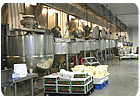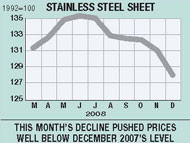
In February, Real Mex closed its 32,000-square-foot manufacturing plant in Santa Fe Springs, Calif., and moved into a 100,000-square-foot space in Vernon, California. The city of Vernon and a developer came to us and proposed a deal where we got a 100,000-square-foot building retrofitted to a state-of-the-art USDA manufacturing plant, Angulo explains. It was an opportunistic deal. They got us into 100,000 square feet at the cost that we would have gotten a build-to-suit 65,000-square-foot building.
Food safety also was a major priority for Real Mex in building out the new plant. The company built an in-house lab and hired a complete quality assurance team. Other food safety precautions include a triple boiler system, floor foamers, centralized sanitation system, in-house chlorination system for vegetables and a full quality assurance staff.
The developer invested $10 million in the build out, while Real Mex spent about $4 million on equipment. The completely refurbished plant quadrupled the company’s previous capacity and allowed it to more than double the number of kettles, tumble chillers and blast freezers. www.realmexfoods.com

 Deceleration. Real estate industry investors and professionals expect financial and real estate markets in the United States to bottom in 2009 and flounder for much of 2010, with ongoing drops in property values, more foreclosures and delinquencies, and a limping economy that will continue to crimp property cash flows, according to the Emerging Trends in Real Estate 2009 Report.
Deceleration. Real estate industry investors and professionals expect financial and real estate markets in the United States to bottom in 2009 and flounder for much of 2010, with ongoing drops in property values, more foreclosures and delinquencies, and a limping economy that will continue to crimp property cash flows, according to the Emerging Trends in Real Estate 2009 Report. New regulations in California for heavy-duty diesel trucks could force a sweeping overhaul of the state’s trucking industry and pave the way for similar changes elsewhere.
New regulations in California for heavy-duty diesel trucks could force a sweeping overhaul of the state’s trucking industry and pave the way for similar changes elsewhere. According to
According to